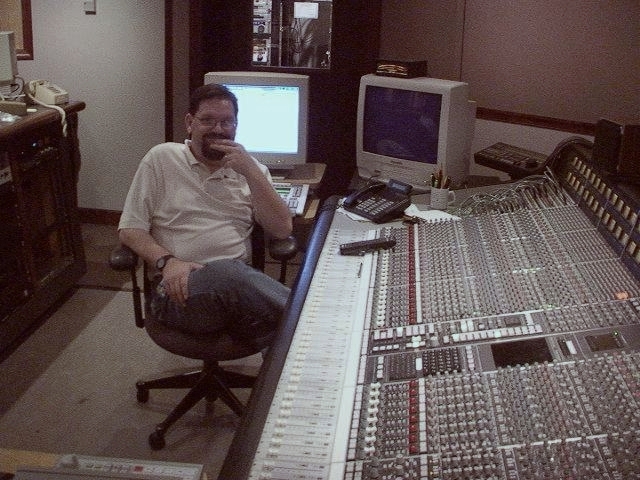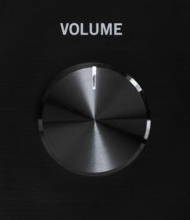Analysis Paralysis in Guitar Modeling

09/28/2019
HOUSTON, WE HAVE A PROBLEM.
There is a common complaint that seems to dog any general discussion of modeling systems: People complain that they can step up to their amp and get their sound in two minutes but it takes much longer to dial in a modeler. True. They also complain that the process is far more complicated than simply plugging into an amp and playing. Also true. However, what must be understood about full-range modelers is that they don’t just reproduce an amp but the entire signal chain from the guitar output jack to the tape head. With the modeler you are managing and tweaking the pedals, the amp, the speaker and cabinet, the mic and its position, and potentially even the studio processing used to create a finished sound for record. Even in the analog world that requires much more knowledge, consideration, and trial and error. With all those choices, the downside of the process of creating a modeler preset is that it may take the player up to a brick wall called analysis paralysis.
Womack’s First Law: When the number of options facing a user increases to a certain threshold, he will often simply freeze up and be unable to make decisions in a timely fashion.

The author after a long day of sessions in 2003
I worked for years on possibly the most flexible analog mixing console in history, the Solid State Logic 4000 series, seen above. The SSL 4000 provided eight master operating modes that routed all channel inputs, outputs, faders, auxiliaries, cues, filters, EQ, dynamics, inserts, as well as multitrack monitoring and record statuses, eight different ways! Along with that it provided individual routing options for each individual channel, as well. On a particularly boring session I counted all the controls and indicators on the front panel and the tally came to over 5500! There were two, one-inch-thick manuals required to learn to drive this console. When you bought one, the company sent out a teacher to give your staff a two-day seminar on how to run it. The tendency when you saw this thing for the first time and were confronted with all the options was to be totally overwhelmed.
That same phenomenon is now being experienced by home recordists with modern DAWs and plug-ins and all the options they offer and by those who are new to modeling as well. It is known as analysis paralysis. This phenomonon occurs when there is simply too much data to ingest, process, and apply to the task at hand in the given time. An operator can find himself unable to to make a choice for fear of either making the wrong choice or not making the best choice. In the recording studio we can see this manifest in producers not being willing to choose a particular guitar sound for a song and instead record a dry, clean sound and re-amping that recording later. In modeling it manifests in the operator being unable to settle on or be satisfied with a sound for fear that further tweaking could make it far better.
But going back to this console, something interesting happened when you faced a deadline – when you were forced to get through a session. You eventually realized that you simply couldn’t master all these modes and routing options right off the top – and you didn’t need to. You simply needed to master the console modes necessary to accomplish your goals for that session. As the scope of your sesions grew and those goals changed you would have time to expand your mastery.
TO THE RESCUE:
How does this impact our approach to modeling? As you begin to learn a modeler, you need to narrow down your focus. In order to get started on a new modeler we can take one of two approaches:
1. What do I sound like and how do I accomplish that.
2. How does he sound (some other guitarist) and how do I accomplish that.
Approach number one carries with it the benefit that you know your own basic sound and you probably know how to get it. You have a certain signature. You probably know what gear is required to make that sound happen. If you do, the next step is to simply start from scratch. Assemble the required gear models in your signal path and tweak the controls and gear order until the rig sounds the way you want it to sound. A modeler like the Line6 Helix makes that profoundly simple. After doing this, if you aren’t getting exactly the sound you envision by a direct path, try adding something different. You can change the cabinet on an amp model to change the sound. One of my home bases is the Fender Deluxe Reverb but the single 12” speaker cab supplied with it in most models usually seems to sound a touch shrill and lacking in luster to me. To give it a slightly different curve and response and to add some more complexity, I have moved over to the 2x12” with Jensen C12N ceramic speakers from the Twin Reverb. I like smoother sounds and that cab is also a little smoother. You can also try post-amp processing such as an EQ. This is the approach I far prefer and that I use.
What about approach number two? This is the scenario where you are trying to reproduce someone else’s sound. If this player built his sound on analog gear you will need research the player and the gear he used and supply that gear from the available list of models on the modeling unit. If you can't find an exact match for a piece you may need to find a similar device. Thankfully, the lists of gear modeled are becoming longer and longer with every year. Once you have the gear models, you’ll need to tweak them to make the system sound like his original gear did. That will take you into the forensic audio world and can be quite rewarding as well.
However, these days there are more and more interesting options available. Many modern professional players use modelers so the one you are looking at may very well create and sell presets for your modeler that contain all you need to reproduce his sounds. In fact, in the praise and worship sectors, players are often so committed to exactly reproducing the recorded versions of songs that downloading and using the players’ patches may be the only approach many of them take. I’ll be really honest: I’ve never done this, not even once. I'd rather impress my own sounds onto the music or create something similar to the original sound. Of course, I've been fdortunate to have the freedom to do so - not all are. Of course, if you are going to try to reproduce another player you'll need the same guitars and you'll need to play the exact same parts.

But hidden within all this tweakage is a threat that looms for many players:
Womack's Second Law: The end user must discern the meaning of "good enough" or he will never stop tweaking.
In fact, if you loose sight of the end goal, you might even become soley obsessed with your sound. There comes a point where it is impossible to exactly reproduce a sound without excess tweaking and fidgeting, and that means time and effort, that distracts from the whole business of playing your guitar. Part of the analysis paralysis syndrome is losing sight of the concept of diminishing returns. The operator fears becoming "extinct by instinct," he fears trusting his own gut-level judgment that he has an acceptible sound. It's called perfectionism, and it will make you an unhappy camper. Don't be that guy.
So, what are the takeaways? One: Start small. It is better to create two presets that inspire you and make you play the way you need to play than forty-six that don’t. Again, start small – there’s plenty of time to grow. Two: Don’t get so obsessed with sound that you aren’t playing. Take breaks from tweaking to go back to playing. You’ll find that as you play, your style of playing will naturally suggest more changes. You may find yourself servoing back and forth between too little of an effect and too much, but eventually you’ll settle down. Avoid obsession that distracts you from the main task.
Oh, and have fun!

= =
=




